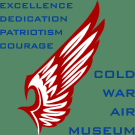 While it is sometimes confused with the Russian Yak 18 and that lineage has been debated. The Nanchang CJ-6 should be recognized as an indigenous Chinese design. It's predecessor, the Nanchang CJ-5, was a Yak-18 design built under license.
While it is sometimes confused with the Russian Yak 18 and that lineage has been debated. The Nanchang CJ-6 should be recognized as an indigenous Chinese design. It's predecessor, the Nanchang CJ-5, was a Yak-18 design built under license.When advances in pilot training brought a need for a new aircraft with improved performance and tricycle landing gear, the PLAAF (Peoples Liberation Army Air Force) engineers brought the CJ6 to life. Featuring an aluminum semi-monocoque fuselage with flush-riveting throughout and a modified Clark airfoil with pronounced dihedral in the outer sections, the design was transferred to the Nanchang Aircraft Manufacturing factory in May of 1958 and the first prototype flew on August 27th the same year.
Initially, production aircraft were equipped with the Housai HS-6 radial engune, a locally manufactured version of the Soviet AI-14 260 hp radial. In 1965 the HS-6 engine was upgraded to 285 hp and redesignated the HS-6A. Equipped with the new engine, the aircraft became the CJ-6A. Total production is estimated at more than 10,000 aircraft including exports worldwide. As of 2007, the Nanchang Aircraft Manufacturing Company was still manufacturing the CJ-6G, a modernized version featuring increased power, a strengthened fuselage, bigger fuel tanks, and other modifications. For CJ-6A flight characteristics and other specifics, click on the museum web page link at the end of this post.
The CJ-6 makes extensive use of pneumatics to control the gear, flaps and brakes as well as to start the engine. An engine driven air-pump recharges the system, if air pressure drops too low to start the engine, the on-board tank must be recharged from an external source. In sub zero climates, air start was more reliable than battery starting an engine. Most of the former soviet aircraft at the museum share an extensive use of pneumatics.
 This CJ-6A is currently flying and often used in flyovers, formation flights and aerobatic training. It carries on the tradition of the Nanchang CJs by being reliable and ready to fly at a moments notice. It is shown below exchanging lead in a formation flight during the Lone Star Red Star fly-in and formation clinic last year.
This CJ-6A is currently flying and often used in flyovers, formation flights and aerobatic training. It carries on the tradition of the Nanchang CJs by being reliable and ready to fly at a moments notice. It is shown below exchanging lead in a formation flight during the Lone Star Red Star fly-in and formation clinic last year. "Bord LN" was recently restored and painted at Long's Aircraft Service in Coleman, Texas. Randy also restored the Fouga CM-170 located at the museum for another previous owner. Randy based the paint scheme for this CJ on a T-34 he saw at a Navy Base in Florida. That T-34 was used to clear an aerial gunnery range before practice and the Commander (not to mention the pilot) wanted a high visibility paint scheme so the aircraft could be seen in case the live fire exercise was started before the aircraft left the range.
"Bord LN" was recently restored and painted at Long's Aircraft Service in Coleman, Texas. Randy also restored the Fouga CM-170 located at the museum for another previous owner. Randy based the paint scheme for this CJ on a T-34 he saw at a Navy Base in Florida. That T-34 was used to clear an aerial gunnery range before practice and the Commander (not to mention the pilot) wanted a high visibility paint scheme so the aircraft could be seen in case the live fire exercise was started before the aircraft left the range.For more information and pictures go to the museum's CJ-6A web page. For related posts, click a label below.



No comments:
Post a Comment